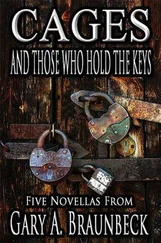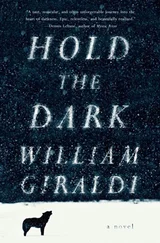Лю Цысинь - Hold Up the Sky
Здесь есть возможность читать онлайн «Лю Цысинь - Hold Up the Sky» весь текст электронной книги совершенно бесплатно (целиком полную версию без сокращений). В некоторых случаях можно слушать аудио, скачать через торрент в формате fb2 и присутствует краткое содержание. Город: London, Год выпуска: 2020, ISBN: 2020, Издательство: Head of Zeus, Жанр: Фантастика и фэнтези, на английском языке. Описание произведения, (предисловие) а так же отзывы посетителей доступны на портале библиотеки ЛибКат.
- Название:Hold Up the Sky
- Автор:
- Издательство:Head of Zeus
- Жанр:
- Год:2020
- Город:London
- ISBN:978-1-83893-763-8
- Рейтинг книги:4 / 5. Голосов: 1
-
Избранное:Добавить в избранное
- Отзывы:
-
Ваша оценка:
- 80
- 1
- 2
- 3
- 4
- 5
Hold Up the Sky: краткое содержание, описание и аннотация
Предлагаем к чтению аннотацию, описание, краткое содержание или предисловие (зависит от того, что написал сам автор книги «Hold Up the Sky»). Если вы не нашли необходимую информацию о книге — напишите в комментариях, мы постараемся отыскать её.
Hold Up the Sky — читать онлайн бесплатно полную книгу (весь текст) целиком
Ниже представлен текст книги, разбитый по страницам. Система сохранения места последней прочитанной страницы, позволяет с удобством читать онлайн бесплатно книгу «Hold Up the Sky», без необходимости каждый раз заново искать на чём Вы остановились. Поставьте закладку, и сможете в любой момент перейти на страницу, на которой закончили чтение.
Интервал:
Закладка:
“The first spiral arm is truly a barren place,” said the High Archon, sighing. His smart field vibrated, initiating a holographic projection that concealed the floor of the flagship and the stars overhead. The High Archon, the fleet commander, and the senator all appeared to be floating in a limitless void. Then, the High Archon switched the hologram feed to display the information sent back by the probe, and a glowing, blue fireball appeared in the middle of the void. The High Archon’s smart field produced a white, square box; it adjusted its shape and moved to enclose the image of the star, plunging the space into near-darkness again. This time, however, a small point of yellow light remained. The focal length of the image adjusted rapidly, and in an instant, the yellow dot zoomed into the foreground, fully occupying half of the void. The three of them were bathed in its reflected, orange radiance.
It was a planet covered in a thick, tempestuous atmosphere, like an orange ocean. The motion of the gas produced an extremely complex, ever-changing lattice of lines. The image of the planet continued to grow until it seemed to occupy the whole universe, and they were swallowed by its orange, gaseous ocean. The probe took them through the thick clouds to a place where the fog was slightly thinner, enabling them to see the planet’s life-forms.
In the upper part of the thick atmosphere floated a school of balloon-shaped animals. Their bodies were covered in kaleidoscopic patterns that changed from stripes to spots to all sorts of wonderful designs—perhaps a sort of visual language. Each balloon had a long tail whose tip occasionally produced a flash of light that traveled up the tail and into the balloon’s body, where it became a diffuse fluorescence.
“Commence the four-dimensional scan!” said the pilot in command of Vessel Red 69012.
An extremely thin beam swept quickly across the balloons from top to bottom. Though the beam was only a few atoms thick, the interior of the beam had one more spatial dimension than normal space. It transmitted data from the scan back to the ship, and in the storage of the ship’s main computer, the balloon creatures were cut into hundreds of billions of thin slices. Each slice was an atom-thick cross section that recorded everything with near-perfect accuracy, down to the state of each quark.
“Commence data mirror assembly!”
The ship’s computer rearranged the hundreds of billions of cross-sectional images in its storage in their original order, superimposing them. Soon, a hollow balloon took shape—a perfect replica of the life-form they had found on the planet, re-created in the computer’s vast digital universe.
“Commence 3C Civilization Test!”
The computer quickly identified the being’s thinking organ, an elliptical structure that hung at the center of an intricate plexus of nerves. The computer analyzed the structure of the brain in an instant and established a direct, high-speed information interface with it, bypassing all of the creature’s lower sensory organs.
The civilization test consisted of a set of questions selected at random from an enormous database. Three correct answers were considered a pass. If a life-form failed to answer the first three questions correctly, the tester had two options: He could end the test and declare a failure, or he could provide more questions. Three correct answers were considered a pass, regardless of how many questions the tester asked.
“3C Civilization Test, Question One: Please describe the smallest unit of matter you have discovered.”
“Dee-dee, doo-doo-doo, dee-dee-dee-dee,” answered the balloon.
“Incorrect. 3C Civilization Test, Question Two: According to your observations, in what direction does thermal energy flow through matter? Can its flow be reversed?”
“Doo-doo-doo, dee-dee, dee-dee-doo-doo,” answered the balloon.
“Incorrect. 3C Civilization Test, Question Three: What is the ratio of a circle’s circumference to its diameter?”
“Dee-dee-dee-dee-doo-doo-doo-doo-doo,” answered the balloon.
“Incorrect. 3C Civilization Test, Question Four…”
“That’s enough,” said the High Archon, after the tenth question. “We don’t have much time.” He turned and signaled to the fleet commander.
“Fire the singularity bomb!” ordered the commander.
Strictly speaking, a singularity bomb was a sizeless object, a point in space, infinitely smaller than an atom. It had mass, though: the largest singularity bombs were billions of tons, and the smallest were more than ten million tons. When the bomb slid out of the arsenal of Vessel Red 69012, it appeared as a sphere, several thousand feet in diameter, that glowed with a faint fluorescence—radiation generated as the miniature black hole consumed the space dust in its path.
Unlike black holes formed by the collapse of stars, these miniature black holes were formed at the beginning of the universe, tiny models of the universal singularity that preceded the big bang. Both the Carbon Federation and the Silicon Empire maintained fleets of ships that cruised the empty space beyond the galactic equator collecting these primordial black holes. Inhabitants of some marine planets called these fleets “deep-sea trawlers.” The “catches” that these fleets brought back were one of the most potent weapons in the galaxy, and the only weapon that could annihilate a star.
The singularity bomb left its guide rail and accelerated along a force-field beam from the ship toward its target star. It arrived in short order, a dusty black hole that quickly plunged into the star’s fiery exterior. Stellar matter rushed from all directions in a turbulent arc toward the center of the black hole, where it disappeared. Copious radiation poured from the black hole, which appeared now as a blinding ball of light on the surface of the star, a diamond on the ring of the star’s circumference.
As the black hole sank into the star’s interior, the radiant orb grew dimmer, revealing the enormous, hundred-million-mile-wide vortex that encircled the orb. The rotating vortex scattered the orb’s light in a kaleidoscopic display that looked, from the vantage of the ship, like a hideous, prismatic face. A moment later, the orb disappeared, as did the vortex, though more slowly; the star appeared to have returned to its original color and luminosity. This was the eye of the storm, the final moment of silence before annihilation.
The voracious black hole sank toward the dense center of the star, devouring everything in its path. In less than a second, it swallowed a mass of stellar material greater than the mass of a hundred medium-sized planets. Super-strong radiation spread out from the black hole toward the surface of the star. Some of it escaped, but most of it was blocked by stellar material, adding enough energy to the star to disrupt its convection and knock it out of equilibrium. The star’s color began to shift, first from red to bright yellow, then to bright green, then to a deep, sapphire blue, and then to a forbidding violet. The radiation from the black hole by now was orders of magnitude more intense than the radiation from the star itself, and as more energy flowed out of the star in the form of nonvisible light, its violet color intensified—a spirit in agony, floating in the vastness of space. Within an hour, the star’s billion-year journey had come to a close.
There was a flash of light that seemed to swallow the whole universe, then faded slowly away. Where the star had been, there was now a thin, spherical layer of material expanding rapidly, like a balloon being blown up. This was the surface of the star, swept outward in the explosion. As it expanded, it became transparent, and a second hollow sphere grew in its center, followed by a third. These waves of material were like exquisitely painted glass orbs, one inside another, and even the smallest of them had a surface area tens of thousands times larger than the original surface area of the star. The first wave vaporized the orange planet in an instant, though it was impossible to see its destruction against such a magnificent background. Compared to the size of the expanding stellar layer, the planet was a speck of dust, not even a dot on the surface of the orb.
Читать дальшеИнтервал:
Закладка:
Похожие книги на «Hold Up the Sky»
Представляем Вашему вниманию похожие книги на «Hold Up the Sky» списком для выбора. Мы отобрали схожую по названию и смыслу литературу в надежде предоставить читателям больше вариантов отыскать новые, интересные, ещё непрочитанные произведения.
Обсуждение, отзывы о книге «Hold Up the Sky» и просто собственные мнения читателей. Оставьте ваши комментарии, напишите, что Вы думаете о произведении, его смысле или главных героях. Укажите что конкретно понравилось, а что нет, и почему Вы так считаете.











